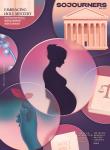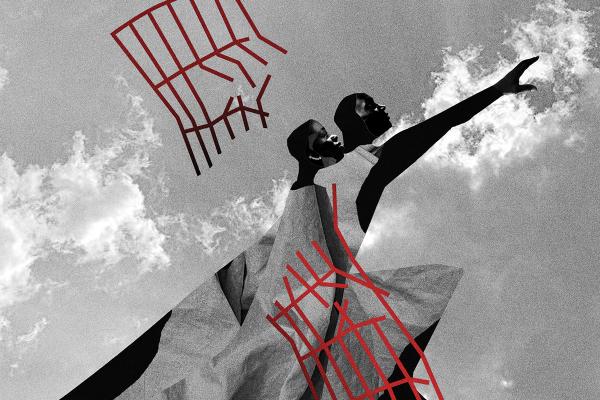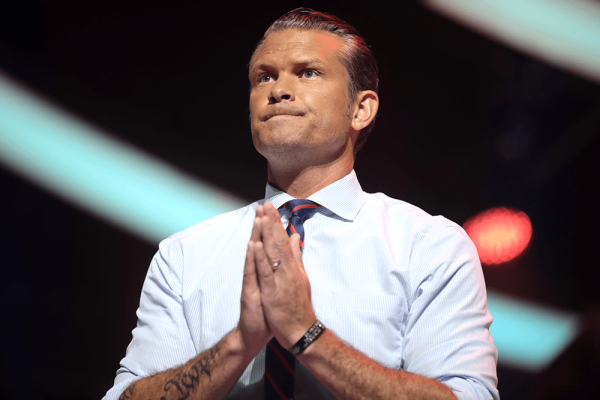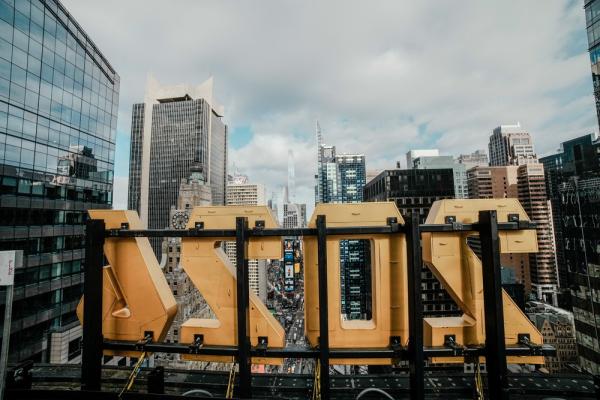BLACK LIVES MATTER. In the years since 17-year-old Trayvon Martin was murdered in his hoodie carrying Skittles, we have learned why this phrase is not simply a consequence of all lives mattering. The world systematically devalues Black life, turns Black life into death-bound life, and it is our task — as justice seekers and as Christians — to embrace Black resurrection.
Politically that makes sense, but what does it mean theologically? Surely Christianity proclaims that all might be saved, independent of skin color. A half-century ago, James Cone and fellow Black theologians embraced this theological challenge head-on. They charged that the possibility of life after death for any individual is inextricably linked to the struggle against the death-dealing forces of white supremacy. How might we fill out this insight today, with Black Power slogans themselves finding new life and new form as activists embrace Black joy, Black excellence, Black rage, Black love, and Black dignity?
In a definition that has rapidly gained traction in activist circles, Black prison abolitionist and scholar Ruth Wilson Gilmore defines racism as “the state-sanctioned or extralegal production and exploitation of group-differentiated vulnerability to premature death.” Black studies scholars have refined and deepened this claim, arguing that anti-Black racism names a system of laws, institutions, feelings, and even forms of seeing and thinking that make Black life particularly vulnerable to premature death. Slavery may have ended in the 19th century, but many of the structures and habits that made slavery possible, that made it plausible for Black human beings to be treated as less than human, persist, and those structures and habits function by making Black life precarious. One false move, and the police officer or prison guard or neighbor or privileged “Karen” may invoke the violent power of whiteness to put an early end to Black life.
Yes, it is true that all human life in the world will end in death. But vulnerability to premature death changes the experience of living. It strips the life out of living, turning each moment into living death. The Black self — body and mind — must be always attuned to its surroundings, calculating risks, perceiving how it is being perceived, adjusting posture and words and the course of life to mitigate risk. Scientists are increasingly finding evidence of the physical harms this causes to Black bodies, literally putting strain on the heart.
In short, while death shadows all life, anti-Blackness results in a near-total eclipse. The theologically salient aspects of the human condition are intensified in Black humanity; attending to Black humanity sharpens how Christians understand the world and understand God’s plan to transform the world through the saving work of Christ.
Slavery as idolatry
LET US APPROACH from the opposite direction: idolatry. An idol is a false copy of God. It is the attempt of humans to control the divine by making worldly what is other-worldly. Humans have a particularly nasty way of disobeying the second commandment: We not only turn objects into false gods, we turn people into false gods too. We are used to worrying about this dynamic when it involves a tyrant or an aspiring tyrant who sets themself up as all-controlling, but what is the slave master if not a little god? Slavery is the paradigmatic case of idolatry — one human masked as the totalizing god of another. Slavery is domination in laboratory conditions: The will of one is all-powerful over another.
One of the insights of today’s racial justice movement is that we live amid the afterlives of slavery. The logic of domination (embodied idolatry) that once organized the encounter of master and slave is now the logic that organizes systemic racism in all its manifestations: not only police violence and incarceration but also employment and housing discrimination, environmental racism, access to nutritious food and necessary health care, and the racist mess that is our educational system. Lurking behind data points of discrimination and institutional habits that perpetuate bias is the primal scene of domination: master standing over slave, imagining himself as a god.
Not only does Black life involve vulnerability to premature death, it also involves being cast in the role of slave — and the life of the enslaved is another way of naming living death. The master can command the slave at any moment, or even take the life of his slave, without himself being accountable to anyone. So, too, with the phantom mastery that animates the myriad forms of anti-Blackness shaping our world (in housing, health care, or education, for example), Black people are subject to the arbitrary will of an unaccountable white supremacist system, sometimes even resulting in premature death.
lloyd.inline.jpg

For Black death, there will be no legal consequences and there will be no grief. To say that Black lives matter means, in part, that premature Black death requires public accountability and public mourning. In 1955, gruesome evidence of anti-Black violence was on display in Chicago when the mother of 14-year-old Emmett Till decided to have an open-casket funeral for her lynched son, precipitating a wave of national mourning and protest. In recent years, again and again, the videos and names of the victims of anti-Black violence have brought about national mourning and organizing. These are occasions when we are reminded of that primal scene of domination and the false claims to divinity that lurk behind the seemingly impersonal systems that interlock to form anti-Blackness.
Vulnerability to premature death makes survival the necessary focus of Black life, but survival means barely living. To affirm the value of Black life requires the possibility for Black life beyond survival: life that is rich and creative, flourishing. As Patrisse Cullors, one of the women who put #BlackLivesMatter into circulation, put it, “We’ve lived in a place that has literally allowed for us to believe and center only black death. We’ve forgotten how to imagine black life.”
But here’s the crux: How can there be flourishing in Black life if premature death is inevitable and the interlocking systems of domination are indestructible, persisting in a zombie state long after slavery’s official end? Secular reason offers no answer. Without faith, and specifically without belief in the possibility of life after death, survival is all that Black people can hope for — and that is a hope against hope. For Black life to matter, we must believe in resurrection.
‘A foretaste of freedom’
REV. OSAGYEFO UHURU SEKOU is a Christian activist and singer who has tried to put this point into lyrics. Born in St. Louis in 1971, Sekou spent years as an itinerant minister, speaker, singer, filmmaker, and activist. Early in the 2014 Ferguson uprising, he returned to his hometown to organize and inspire the rapidly politicizing youths who turned out every night to protest Michael Brown’s death. He was arrested multiple times, once in front of the Ferguson Police Department at an interfaith pray-in that he helped organize.
Despite his clerical collar and Christian phraseology, Sekou reflects, “I’m not terribly hopeful for the church. I think queer, black, poor women are the church’s salvation. They don’t need to get saved. The church needs to get saved.”
Two years after Ferguson, Sekou released “The Revolution Has Come,” a gospel-blues anthem mapping the Christian temporality of resurrection onto the struggle against domination.
“What a time to be alive,” Sekou belts, “when we stand up, we’ve already won.” Organizing against domination is itself a practice of freedom, not just a precursor to freedom. As Sekou put it, “I understand the gospel to affirm black dignity and self-determination.”
When we struggle in our present world, we have a foretaste of freedom, of a world beyond domination located on the eschatological horizon. Struggling against domination opens possibilities for flourishing. The fact of death does not go away, but its significance begins to dissolve. Sekou, invoking his grandmother, illustrates this point. She sang, “I’m too busy working for my Jesus / I ain’t got time to die.”
To be human in history
THE WORLD FREED from domination lies on the other side of a seemingly unbridgeable divide — but that’s only how it appears at first. As we participate in struggle, we participate in freedom, and the significance of the divide between present and future worlds fades.
James Cone made this point in a Christian idiom: “Indeed, because we know that death has been conquered, we are truly free to be human in history.” For Cone, the life, death, and resurrection of Jesus confirm that death has been conquered, but this conquest is also confirmed in the urban rebellions of the late 1960s that prompted Cone to formulate a Black theology. Black people came to realize that if domination has the last word, life is not worth living. Vulnerability to premature death clarified the matter.
Cone asserted, “For blacks death is not really a future reality; it is a part of their everyday existence. They see death every time they see whites.” Continually at risk of death, Black people are primed to realize that it makes sense to struggle, even if struggle means risking death. To struggle is to reject the hold of domination, to embrace new life, and to begin to realize our humanity. As Cone put it, “The rebellion in the cities is not a conscious organized attempt by black people to take over; it is an attempt to say yes to their own dignity even in death.” God working for liberation through rebellion, Cone suggests, makes Black people know that there is something more important than life itself. Black people “can afford to be indifferent toward death” because the freedom we taste in struggle is so sweet.
lloydinline2.jpg

When death’s meaning begins to change
IN A SPIRITUAL rather than religious idiom, the Martinican poet Aimé Césaire also embraced Black life after death. In his Notebook of a Return to a Native Land, a poetic masterpiece first written in 1939 and rewritten over the next two decades, Césaire reflected on what it would mean to embrace life, to flourish, in an anti-Black world. When he returned from his studies in Paris, he found life on his island clouded by death. Not grand death, but mundane death caused by small-minded colonizers. Death (and life) in Martinique was ultimately futile; he was struck by its “dazzling pettiness.” After Césaire realized that seemingly trivial Black death on his small island was connected with Black death around the world, and Black struggles around the world — “marshes of putrid blood” — the meaning of death begins to change. Vulnerability to death binds Black people together, and by embracing the power of Blackness and African ancestors, Césaire learned “to charm the snakes” and “to conjure the dead.” He learned how to exercise power over death; in a sense, he learned how to dominate death along with the rest of the natural world.
But this is not the end of Césaire’s story. As his narrative poem progresses, Césaire comes to realize that a wholehearted embrace of what is essentially a caricature of African spirituality, leveraged to advance self-interest, is ultimately unsatisfying. He turned to celebrating those who live in right relation to their land and their fellows, who “yield, captivated, to the essence of things.” He recommended attention undistorted by the forces of domination that contaminate our perception. This includes attention to oneself, to one’s feelings, to joy, love, and grief, so that they too may be felt rightly, undistorted.
To see and feel without distortion was impossible in this world; Césaire therefore resorted to prayer. He asked for the strength of character needed to attend rightly to world and self, capable of continually purging those forces that distort. He asked to be like a pirogue, one of the small boats used by the Indigenous people of the Caribbean to move between islands. A pirogue is gently guided so that its movements at once struggle with the sea and are in harmony with it. The boat’s course is directed by its skilled occupant. This movement of the pirogue, which Césaire prayed might become the shape of his life, he labeled “the sacred dance.”
Césaire offers one image of Black resurrection — of life after Black death. Yet between our world and the world to come, between our life and new life, is a daunting chasm. Not even our churches are free from the interlocking systems of sin from which there seems no escape.
It is only in fleeting moments that we preview “the sacred dance” that awaits us — in our hopes and prayers, songs and poems. And only by appreciating the depths of despair into which our present condition thrusts us can we understand the quality of faith necessary to persist in the present and to hope for the future.
The salvation and possibility of resurrection for all Christians in America today is inextricably linked to the struggle against the death-dealing forces of white supremacy because that is America’s idolatry. In this sense, generalized theologies of life after death are empty and banal, and at the end of the day, worldly. The lens of Black life and Black resurrection brings Christians to a fuller understanding of the freedom that awaits us. A theology of Black resurrection counteracts temptations toward idolatry of whiteness or solitary religion. As Cone wrote, “Christianity is not alien to Black Power; it is Black Power.”
In America today, not “all” resurrections matter; Black resurrections matter.

Got something to say about what you're reading? We value your feedback!






